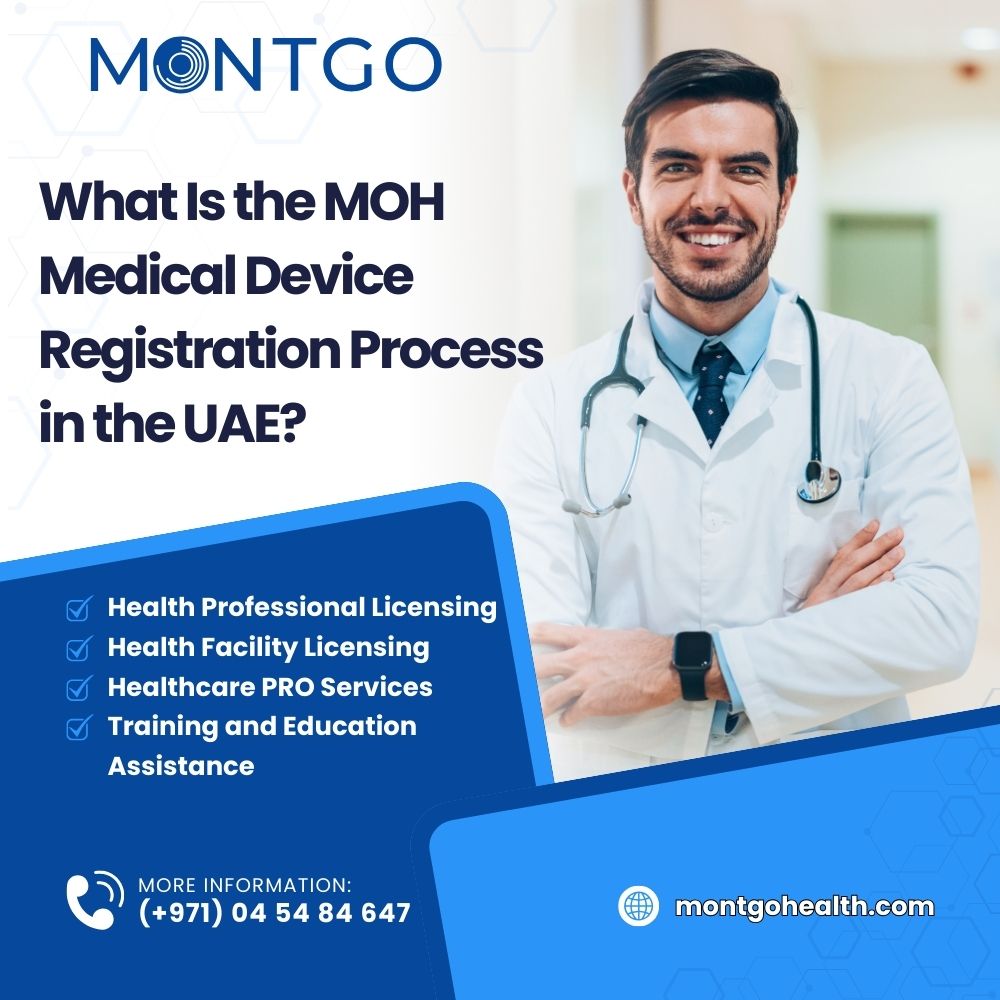Understanding MOHAP & Why Registration Matters
If you want to sell or import medical devices into the UAE (except in some special free zones), you must register them with MOHAP. This is not just bureaucracy, it’s a way for the Ministry to make sure devices are safe, effective, and properly tracked.
Step 1: Register the Manufacturer (if not already)
Before you even register a device, you need to make sure the manufacturer is registered with MOHAP:
- Use UAE PASS to log into MOHAP’s online portal / smart app.
- Submit the required documents: company profile, business license, a list of products, etc.
- Pay the registration fees (AED 100 for application + AED 10,000 for the actual registration).
- MOHAP’s technical committee reviews your application.
- Once approved, your manufacturing site is registered. This registration is valid for 5 years and must then be renewed.
- For renewal later on, you need documents like a valid ISO 13485 (quality certificate) and company profile.
Step 2: Register the Medical Device Itself
Once the manufacturer is registered, you can apply to register each medical device:
- Log in to MOHAP’s portal / app using UAE PASS.
- Fill out the device registration application, sign it, and submit it through the e-service.
- Pay the fees: there’s a small application fee (AED 100) and a bigger registration fee (AED 5,000).
- The application goes to technical committees. They deliberate, check your documents, and send recommendations to a ministerial committee.
- If anything is missing or needs clarification, MOHAP will ask, and you need to respond via the same online portal.
- Once approved, they’ll issue a certificate of registration for each device. That certificate is valid for 5 years.
What Documents Do You Need?
Here’s what MOHAP typically requires for a medical device:
- A completed and signed application form.
- A copy of the manufacturer’s valid registration certificate.
- Certificate of Free Sale / Registration from the country of origin, attested by the UAE Embassy.
- A signed contract between the local agent (in UAE) and the manufacturer.
- Quality / Conformity certificates — depending on your device class, things like CE marking, FDA approval, ISO 13485, etc.
- Product information: description, models, sizes, accessories, instructions, warnings, user manual, etc.
- Laboratory analysis reports, pricing data (for certain devices).
- A physical sample of the device + its packaging (internal & external) + brochure or user manual.
- Safety and efficacy data for higher-risk devices (Class III or IV).
- If your device is made from animal-derived materials, a specific “certificate of conformity” for that.
- Post-market surveillance / monitoring plan (how you will monitor device safety after it’s on the market).
Step 3: Import Permit (Before Importing the Device)
If you are importing the device into the UAE, you also need an import permit from MOHAP:
- Apply before shipping the goods this is called a pre-import permit.
- Provide required documents: invoice, product catalogue or photos, etc.
- After goods are shipped / on the way, submit a second application (shipment clearance) using the airway bill or bill of lading.
- Once approved, you’ll get a permit that is valid for 60 days.
- MOHAP inspectors may check the goods at customs to confirm everything matches (especially for “medicated” medical devices).
Step 4: Renewal of the Device Registration
Your device registration doesn’t last forever you have to renew it:
- Renewal takes about 15 working days according to MOHAP.
- Fee for renewal: AED 2,500.
- You may need to submit updated documentation: for example, quality certificates, analysis reports, samples, etc.
What About Risk Classification?
Devices are classified by risk (Class I, II, III, etc.), and the class determines how strict the review is.
- For higher-risk devices, MOHAP expects more data clinical, safety, efficacy.
- If your device is already approved by strong regulators (e.g. FDA, EU), this can help speed up the MOHAP assessment.
Timeline & Costs at a Glance
Key Tips & Best Practices
- Be thorough with documentation. Missing or weak data is a common reason for delays.
- Get a reliable local partner/agent in the UAE. They can help with the paperwork and communication.
- Use UAE PASS from the beginning so you can access MOHAP’s e-services properly.
- Plan ahead for import permits, Don’t wait until after shipping to apply.
- Maintain post-market surveillance: think about how you will monitor device performance once it’s in use in the UAE.
- Stay on top of renewals and mark your calendar so you don’t let your device registration expire.
Why It’s Worth It
Yes, this process might feel a little detailed, but it’s made that way for a reason:
- It ensures safety: MOHAP wants to make sure devices are safe for patients.
- It builds trust: Hospitals, clinics, and distributors feel safer buying devices that are officially registered.
- It brings credibility: A MOHAP registration certificate means you’ve met UAE regulatory standards that’s good for business. Visit Montgo Health
Frequently Ask Questions
-
What is MOH medical device registration?
It is the process of registering medical devices with the Ministry of Health to ensure compliance with safety and quality standards. -
Which devices require registration?
All medical devices intended for use in healthcare, including diagnostic, therapeutic, and monitoring equipment, must be registered. -
What documents are needed for registration?
Typically, you need a device description, technical specifications, quality certifications, labeling details, and a certificate of free sale or origin. -
How long does the registration process take?
The process can vary but usually takes several weeks to a few months depending on device complexity and documentation completeness. -
Is local representation required?
Yes, foreign manufacturers usually need a local authorized representative or distributor for registration purposes. -
Can a device be marketed before registration?
No, marketing or selling a medical device before MOH registration is prohibited and may result in penalties.
